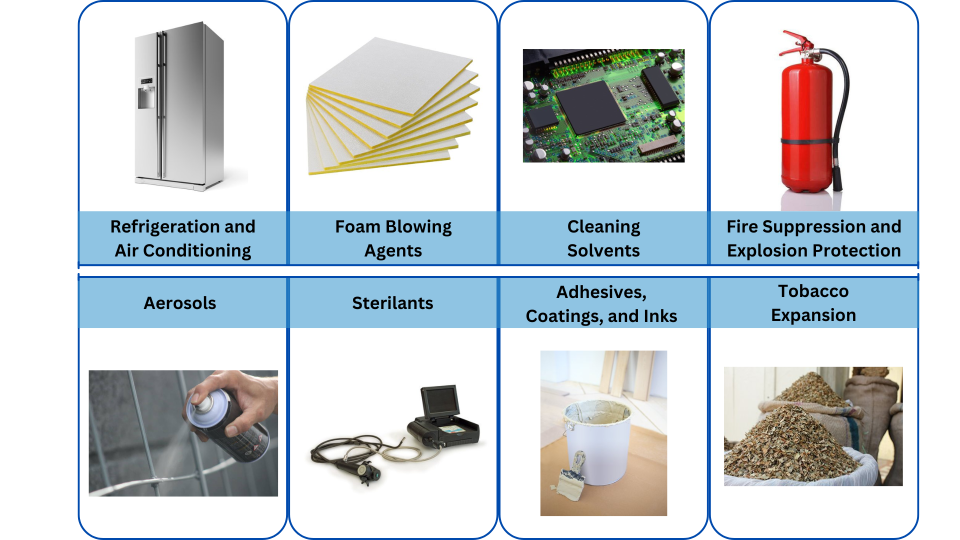SNAP Program Overview
Under Title VI of the Clean Air Act, the SNAP program identifies and evaluates substitutes in end-uses that have historically used ozone-depleting substances (ODS). SNAP listings of acceptable alternatives can also help sectors transition away from high global warming potential hydrofluorocarbons (HFCs) addressed under the American Innovation and Manufacturing (AIM) Act including its Technology Transitions Program. For example, some substitutes that are listed as acceptable under the SNAP program, starting with the first SNAP rulemaking in 1994, might be subject to more recent restrictions established under the Technology Transitions Program. For detailed information on specific restrictions and guidance, please refer to the Technology Transitions Program.

The SNAP framework also considers the following:
- Looks at overall risk to human health and the environment of both existing and new substitutes;
- Publishes lists of acceptable and unacceptable substitutes by end-use;
- Promotes the use of acceptable substitutes; and
- Provides the public with information about the potential environmental and human health impacts of substitutes.
To arrive at determinations on the acceptability of substitutes, the Agency performs a cross-media analysis of risks to human health and the environment from the use of various substitutes in different industrial and consumer uses that have historically used ODS. EPA reviews characteristics, including the following, when evaluating each proposed substitute:
- Ozone depletion potential (ODP),
- Global warming potential (GWP),
- Toxicity,
- Flammability,
- Occupational and consumer health/safety,
- Local air quality, and
- Ecosystem effects.
The SNAP program does not provide a static list of alternatives but instead, evolves the list as EPA makes decisions that are informed by its overall understanding of the environmental and human health impacts as well as its current knowledge about available substitutes. Section 612 also provides that EPA must prohibit the use of a substitute where EPA has determined that there are other available substitutes that pose less overall risk to human health and the environment.
Learn more on the regulation or substitute information by industry sector.
